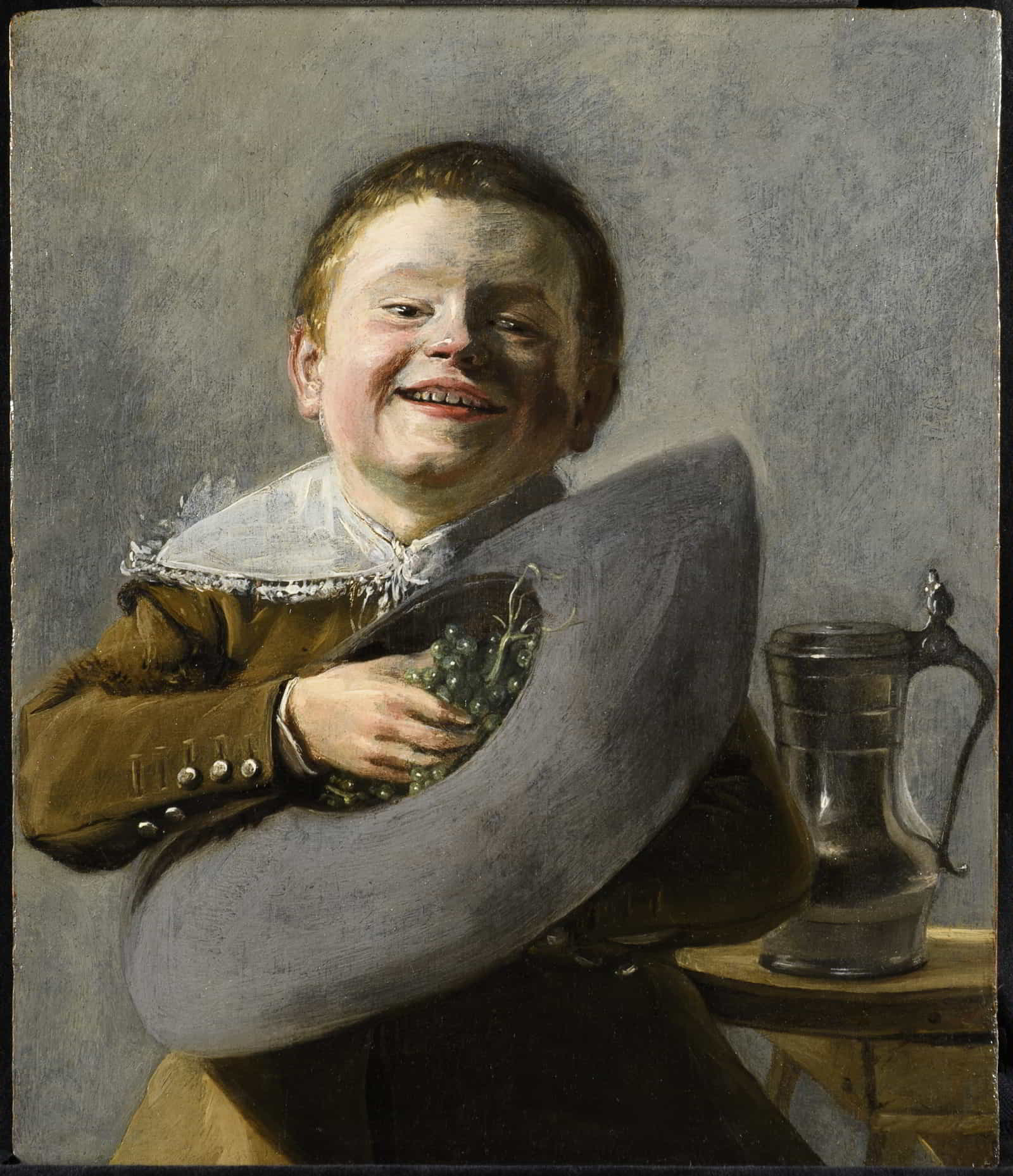Red Skelton's Judith Leyster, Sold by LACMA, Resurfaces in New Hampshire
 |
| Judith Leyster, Boy Holding Grapes and a Hat, about 1630. Currier Museum of Art, Manchester, New Hampshire |
Skelton played clowns on his TV variety show and had a sideline painting kitschy clown portraits. The comic gave Boy Holding Grapes to the Los Angeles County Museum in 1955. LACMA sold it in 1977. Presumably that was with Skelton's consent, for he lived to 1997.
 |
| Left: Philippe Halsman, Red Skelton, 1952. LACMA. Right: A giclée print of Red Skelton's Freddy |
Boy Holding Grapes was then "out of sight for 40 years until it was discovered by noted Dutch dealer Salomon Lilian." The latter is a well-known gallerist with numerous sales to American collectors and museums.
Museum acquisitions committees are avidly seeking works by pre-contemporary women artists (as recent posts have noted). One would expect an unquestioned Leyster in prime condition to have many big-money bidders. That Boy Holding Grapes went to a regional museum not known for its acquisition budget hints at a painting that is problematic in some regard. There could be questions about its attribution, condition, or provenance.
That includes the black asterisk that comes from having been deaccessioned by a major museum. This is the only work that Red Skelton donated to LACMA. What's the chance that a Hollywood star, then or now, buys one Old Master painting and it's a legit masterpiece?
That's not to say it couldn't happen. Currier director Alan Chong is convinced that Boy Holding Grapes adds one to the small (rarer than Vermeer) corpus of Leyster paintings.
 |
| Judith Leyster, Self-Portrait, about 1630. National Gallery of Art, Washington. This famous Leyster is contemporary with the assigned date of the Boy Holding Grapes and Hat |
Comments
Ugh! It is so discomfiting that the local press (The Union Leader) in New Hampshire does not include in its reporting the provenance since LACMA's deaccession, other than its discovery "by the Dutch dealer Salomon Lilian."
Questions:
1) Why did LACMA sell it? It seems to be right in line with LACMA's strong 17th C. holdings. Does Leyster's monogram appear on the work?
2) Did LACMA dispose of it knowing it was a Leyster autograph? If so, more's the pity, given the fact that her works are as rare as hens' teeth.
3) Where did the dealer Lilian discover it?
4) Who did the Currier Museum buy it from? Private sale, with Lilian as go-between?
5) What is the condition of the work? Did that spur LACMA's deaccession of it to begin with?
6) What did LACMA use the funds from the Leyster disposal for? Something better, one hopes?
7) Why, given the work's importance, doesn't Currier have even a syllable on their web site? In this day and age, this is just completely unacceptable.
There was a painting owned by LACMA several years ago that had been featured in some of their publications. The management team of the museum at that time apparently appreciated it more than latter employees did. I recall reading the work had been eventually auctioned off by the museum.
Institutions depend on the judgment and integrity of their staffers, including the director and board of trustees. I've read a few blog posts of CultureGrrl (Lee Rosenbaum) about that subject and the ethics of cultural decisionmakers are increasingly becoming a crapshoot.
Example: The new LACMA building has a lot of windows, but the museum isn't as transparent in today's times as its glass-sided outer walls will be.
LACMA'S deaccessioned Leyster is listed as an authentic work (cat. no. 7, illus., plate 7).
Included also is post-LACMA data on provenance, as follows: LACMA sold the work through Sotheby Parke Bernet, Los Angeles, Nov. 7-9, 1977, no. 128 (for $5,750); with Ira Spanierman, Inc., New York; sold, Christie’s, London, Oct. 31, 1980, no. 146 (for GBP 3,800).
The seller this year at Brussels can afford to splurge on a very nice bottle of vintage champagne.
The winning bidder, Dutch dealer Salomon Lilian, reports on condition in a press release by the Currier Museum: "My only concern was that the right side of the face seemed restored. However, when we cleaned the painting, a perfectly preserved face was revealed under the old restoration. "